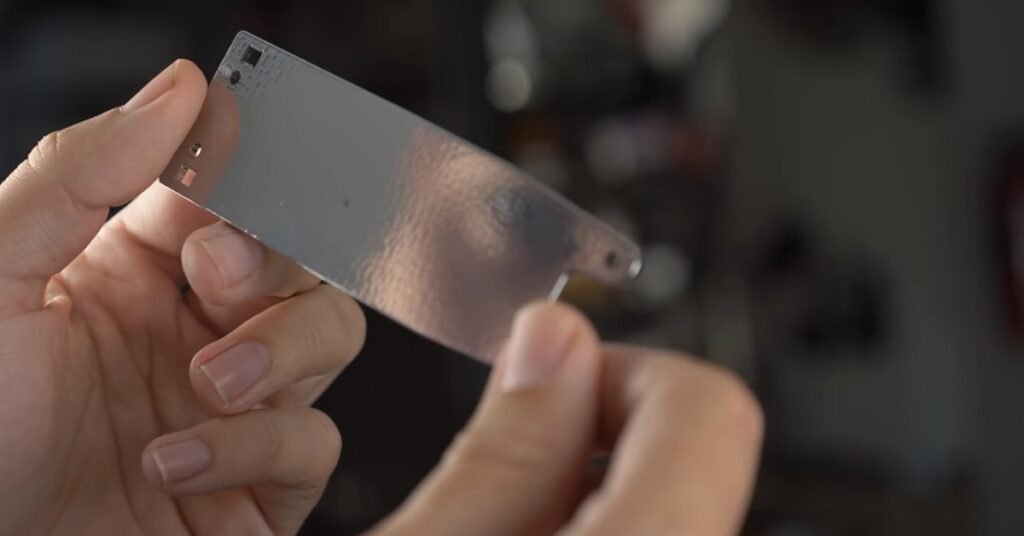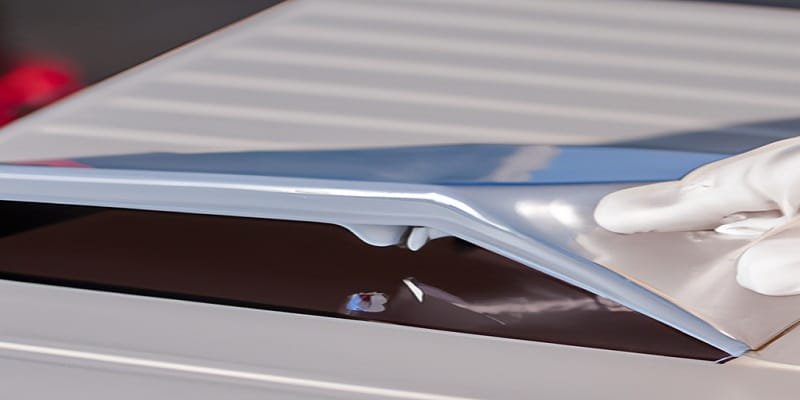Carbon fiber is an incredibly useful composite material made up of thin strands of carbon that are tightly woven together.
It’s super strong for its weight, which makes it popular for things like bicycles, car body parts, and even airplane components. Carbon fiber can have a beautiful glossy appearance that some people like to accentuate even more with a nice smooth coat of paint.
But can you powder coat carbon fiber? Or does the material need some type of special treatment first?
As you probably know, powder coating involves applying a powdered paint product electrostatically, then baking it to melt and cure the material into a smooth hard finish. This can work great on all kinds of materials, but carbon fiber tends to be a bit trickier.
In this article, we’ll look at the challenges of powder coating carbon fiber, solutions and best practices to make it work, as well as examples of how it can turn out when done properly. Let’s dive in!

Challenges of Applying Powder Coat to Carbon Fiber
There are a few key obstacles that make powder coating carbon fiber more difficult than other materials:
Carbon Fiber is Not Electrically Conductive
Powder coating relies on an electrostatic charge to get the powder to adhere to the surface before heating. The powder particles have an opposite charge than the grounded item being coated.
Since carbon fiber composites are non-conductive, it’s hard for the powder to “stick” initially. The material’s properties just don’t allow the electrostatic charge to build up well.
Difficult to Get Powder Into All the Nooks
Carbon fiber is made up of bunches of woven strands, leaving microscopic holes and valleys throughout the weave. This complex surface texture makes it tough for powder coat to get into all the nooks and fully cover the material.
Any spots that are missed can end up looking patchy and uneven.
Risk of Filling in the Weave Too Much
While getting into every crevice is important, you also don’t want to fill in the natural woven pattern and texture of the carbon fiber too much. The right application needs to strike a careful balance here.
Some methods and amounts of powder coating might round-off and flatten the distinct 3D weave, which takes away from the visual appeal.
Curing Temperature Needs Adjustment
Most powder coatings are designed to cure at around 400 degrees Fahrenheit. However, some carbon fiber begins degrading at temperatures above 320 or so.
Applying standard powder at too high of a temperature can start damaging the carbon fiber itself. The process needs to be dialed-in to work at a lower temp.
Solutions for Successfully Powder Coating Carbon Fiber
Luckily there are some good solutions out there to help overcome the hurdles of coating carbon fiber. Let’s look at several important steps to follow:
Use an Adhesion Promoter First
An adhesion promoter (also called etch primer or prep wash) acts like a glue layer between the carbon fiber and powder. Common options are things like Teflon or zinc phosphate coatings.
Giving the surface a thin even coat of adhesion promoter allows the powder to cling much better. It fills in microscopic pits for a smoother surface too.
Just be sure to apply a light misting without overdoing it. The goal is to help the powder adhere while still allowing the beautiful carbon weave to show through.
Adjust Application Method
The standard electrostatic spray technique for powder won’t cut it here. To work the powder into every crevice, you’ll need to apply the powder differently.
Some options that have worked for people are:
- Dipping – Lower the part into a powder bed, allowing the powder to penetrate then tapping off excess.
- Fluidized Bed – Use air to create a floating powder bed to submerge the part in.
- Dry Spray – Use air (no electrostatic) to force powder into the weave.
- Powder Rain – Pass powder through a distributor to rain down on the surface.
Getting creative with the application can make all the difference here.
Use Low-Cure Powder Formulations
Specifically choosing a powder coating that’s formulated to be flexible and to cure at a lower temperature is wise here.
For example, some companies like Prismatic Powders offer low-cure powders designed for composite use. They still provide excellent protection and appearance at the right specs for carbon fiber or fiberglass.
This also allows the powder to expand and flex with the material as it’s stressed rather than cracking over time.
Dial in Proper Cure Time and Temperature
Work with the powder manufacturer to identify the window for curing their coating at an ideal time and temperature for the specific type of carbon fiber composite being coated.
For example, curing at around 325 degrees F for 15-20 minutes rather than a higher 400 degree cure.
Closely monitor this and make any equipment adjustments needed to maintain proper heat levels without overdoing it. Take into account the part size/thickness which impacts how it heats up in the oven.
Apply Base Coat First (Optional)
For especially demanding applications, some opt to apply a durable painted undercoat to build up a smooth sealed surface before powder coating.
This provides maximum coverage by filling in the carbon fiber weave more completely with paint/primer first, followed by the flowing powder overtop.
However, this extra step does add cost, time, and coats over the natural carbon look more. Only use as needed for tougher applications and don’t overdo the thickness.
Best Practices for Power Coating Carbon Fiber
Following some best practices throughout the coating process helps ensure a professional quality finished result:
- Properly prepare the surface – Clean, degrease, sand, and mask off areas as needed to create the ideal foundation before starting.
- Give parts a quick oven bake first – This helps release any contained moisture or oils from the carbon fiber before powder coating.
- Apply powder coat in thin multiple layers for full coverage rather than one thick pass.
- Allow proper cure time between coats as specified by the manufacturer. This helps layers fully crosslink for optimum durability.
- Inspect closely and catch any drips or runs after each layer. Sand out and reapply if needed.
- Follow all powder product guidelines – Powder coatings vary, so consult the powder’s specs for proper application, thickness, cure time/temp, topcoat windows, etc.
- Consider edge radiusing – Rounding sharp edges slightly can help minimize edge chipping and flaking later on.
Key Takeaways on Powder Coating Carbon Fiber
Powder coating carbon fiber takes special consideration but can create stunning finished results when done properly. Here are the big takeaways:
- Overcome challenges like poor conductivity and filling the textured surface using adhesion promoters and alternative application methods.
- Select flexible, low-cure temperature powder formulations specifically designed for composites.
- Dial-in proper cure times and temperatures to suit the carbon fiber material.
- Use thin multiple coats for full coverage rather than one thick coat.
- Follow all guidelines and best practices from the powder manufacturer.
- The end result highlights the carbon’s sleek tech aesthetic with added protection and visual pop.
- Coated carbon fiber is popular on products like bicycles, cars, electronics, drones, and sports gear that benefit from the weight savings and rigidity.
With the right process, powder coating can make carbon fiber look incredible on all kinds of applications. The dazzling colors and glossy depth showcase this high performance material at its best.

Now, it’s time to get a clear answer:
Can You Powder Coat Carbon Fiber?
Yes, Powder coating carbon fiber composite parts is possible but requires adjusting the standard process to account for the material’s unique properties. The non-conductive properties and intricate surface texture of carbon fiber composites present challenges for proper powder adhesion and cure.
However, following best practices like using adhesion promoters, adjusting application methods, choosing flexible powders that cure at lower temperatures, and closely controlling the entire coating process allows powder coating carbon fiber successfully. The end result highlights the beautiful woven appearance with added gloss and color.
FAQs
Can you powder coat carbon fiber at home?
While challenging for beginners, it is possible with care and the right homemade equipment. Ensure the workshop space is very well ventilated for safety.
Does powder coating affect carbon fiber strength?
Minimal effect on strength when using proper flex powders and cure temperatures. The coating will not penetrate the composite’s cross-linked structure.
How durable is powder coated carbon fiber?
Very durable and long-lasting comparable to metal when the right coating formulation and application process is used. However, chips and scratches may still occur under impact.
Final Thoughts
Powder coating carbon fiber parts may require more effort, but the dazzling finished results make it worthwhile for both visual appeal and protection. With careful surface prep, customized application techniques, and properly formulated powder paint, carbon fiber’s signature texture can be preserved and enhanced for stunning styling effects.
Whether you’re coating a bike frame, car component, electronic device, drone, sporting goods, or any application benefitting from carbon fiber’s strengths, powder coating offers a fantastic way to showcase this material’s natural beauty.


